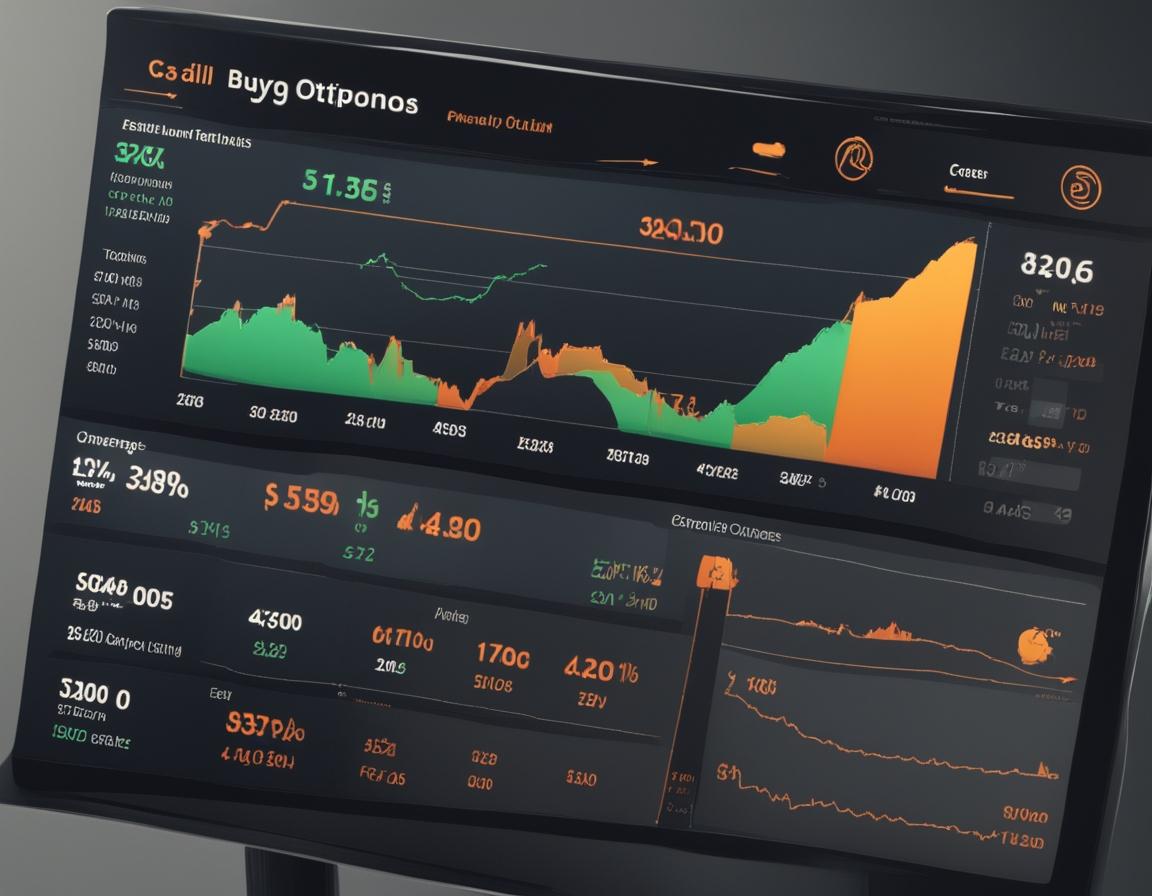Introduction
Option trading is a fascinating segment of the financial markets that offers traders the ability to speculate or hedge using contracts derived from an underlying asset. Unlike traditional stock trading, options provide unique opportunities and risks, making them a versatile tool for investors.
Understanding Options
Types of Options: Call and Put
At its core, an option is a financial derivative that grants the holder the right, but not the obligation, to buy or sell an underlying asset at a predetermined price within a specified timeframe. There are two primary types of options:
- Call Options: Give the holder the right to buy an asset.
- Put Options: Give the holder the right to sell an asset.
Basic Terminology in Option Trading
- Underlying Asset: The financial instrument (stocks, indices, commodities) that the option derives its value from.
- Strike Price: The price at which the option can be exercised.
- Premium: The cost of purchasing the option.
- Expiry Date: The date on which the option contract expires.
How Option Trading Works
The Mechanics of Buying and Selling Options
When trading options, buyers pay a premium to the sellers (writers) for the rights conveyed by the options. The value of the options is influenced by various factors, including the price of the underlying asset, time remaining until expiration, and market volatility.
The Role of Option Premiums
The premium is a critical component as it represents the cost to the buyer and the income to the seller. It is influenced by:
- Intrinsic Value: The difference between the underlying asset’s current price and the strike price.
- Time Value: The additional amount paid for the potential of the option to increase in value before expiry.
Understanding Strike Price and Expiry Date
The strike price and expiry date are pivotal in determining the potential profitability of an option. The strike price must be considered in the context of the underlying asset’s current and expected price movements, while the expiry date affects the time value of the option.

Types of Options Contracts
American vs. European Options
- American Options: Can be exercised at any time before the expiry date.
- European Options: Can only be exercised on the expiry date.
Exotic Options
Exotic options are more complex and include variations like barrier options, which activate or deactivate upon reaching certain price levels, and binary options, which pay a fixed amount if a certain condition is met.
Benefits of Option Trading
Flexibility and Versatility
Options allow for a wide range of strategies, from conservative income generation to speculative plays. They can be used to hedge against potential losses in other investments.
Leverage in Trading
Options provide leverage, meaning you can control a large position with a relatively small investment. This amplifies potential gains, but also potential losses.
Risk Management
Options can be used to limit risk. For instance, buying puts can protect against a decline in the value of a stock you own, effectively setting a floor on your potential losses.
Risks of Option Trading
Potential for Significant Losses
While options offer the potential for high returns, they also come with significant risk. Traders can lose their entire investment, and in some cases, more than they invested if not managed properly.
Complexity and the Learning Curve
Options trading is more complex than trading stocks or bonds. It requires a good understanding of the market and the various factors that affect options pricing.
Option Trading Strategies
Covered Call
A covered call involves holding the underlying asset and selling a call option against it. This strategy generates income from the option premium while providing some downside protection.
Protective Put
Buying a protective put involves holding the underlying asset and buying a put option. This strategy protects against downside risk while maintaining upside potential.
Straddle and Strangle
These are volatility strategies. A straddle involves buying a call and put option at the same strike price, while a strangle involves buying options at different strike prices. Both benefit from significant price movements in either direction.
The Greeks in Option Trading
Delta, Gamma, Theta, Vega, and Rho
The Greeks are measures of sensitivity to various factors:
- Delta: Sensitivity to the underlying asset’s price.
- Gamma: Sensitivity of delta to the underlying asset’s price.
- Theta: Sensitivity to time decay.
- Vega: Sensitivity to volatility.
- Rho: Sensitivity to interest rates.
Importance of the Greeks in Managing Trades
Understanding the Greeks helps traders manage risk and make informed decisions about entering or exiting positions.
Getting Started with Option Trading
Choosing a Brokerage Platform
Select a platform that offers robust tools, educational resources, and competitive pricing. Popular platforms include TD Ameritrade, E*TRADE, and Robinhood.
Opening an Options Trading Account
You need to apply for options trading approval, which may require disclosing your trading experience and financial situation.
Paper Trading: Practicing Before the Real Deal
Many platforms offer paper trading accounts where you can practice without risking real money. This helps you gain experience and confidence.
Analyzing the Market for Options
Fundamental Analysis
Assessing the underlying asset’s intrinsic value based on financial statements, industry conditions, and economic factors.
Technical Analysis
Using charts and technical indicators to predict future price movements based on historical data.
Tools and Resources for Option Traders
Option Chains and Quotes
Option chains provide a list of all available options for a particular underlying asset, showing their strike prices, premiums, and expiry dates.
Trading Software and Apps
Platforms like Thinkorswim, TradingView, and OptionsHouse offer advanced charting tools, real-time data, and trading capabilities.
Educational Resources and Communities
Websites, books, online courses, and forums can help you learn more about options trading. Engaging with a community of traders can provide valuable insights and support.
Tax Implications of Option Trading
Understanding Taxation on Profits and Losses
Options are taxed differently depending on how long you hold them and whether they are classified as capital gains or ordinary income.
Reporting Requirements
Keep detailed records of your trades to accurately report your gains and losses on your tax return.
Common Mistakes to Avoid in Option Trading
Overleveraging
Using too much leverage can lead to significant losses. It’s important to manage your risk and not invest more than you can afford to lose.
Ignoring Market Conditions
Market conditions can change rapidly. Staying informed and adjusting your strategies accordingly is crucial for success.
Advanced Option Trading Techniques
Iron Condor
This strategy involves selling an out-of-the-money call and put, while buying further out-of-the-money call and put options. It’s used to profit from low volatility.
Butterfly Spread
Involves buying one call (or put) at a lower strike, selling two calls (or puts) at a middle strike, and buying one call (or put) at a higher strike. It’s a neutral strategy that profits from low volatility.
Conclusion
Option trading offers a wealth of
opportunities for those willing to learn and manage their risks effectively. By understanding the basics, exploring various strategies, and leveraging the right tools, traders can navigate this complex but rewarding financial market.
FAQs
What is the difference between options and stocks?
Options are derivatives that give you the right to buy or sell a stock at a set price, whereas stocks represent ownership in a company.
Can you lose more money than you invest in options?
Yes, particularly with certain strategies like selling naked calls, where losses can be theoretically unlimited.
How do you choose the right options strategy?
It depends on your market outlook, risk tolerance, and investment goals. Understanding different strategies and their implications is key.
What is the best time to trade options?
Options are typically more active during market hours when trading volume is higher, leading to better liquidity and tighter spreads.
Are options suitable for beginners?
Options can be suitable for beginners willing to invest the time to learn. Starting with simpler strategies and using educational resources can help ease the learning curve.



